Author: Jacqueline Belesky
Looking for some travel inspo? We’ve listed the Seven Natural Wonders of the World below. If you are planning a holiday, you might be interested in comparing personal loans and travel insurance, too.
1. Mount Everest
Mount Everest is renowned as the highest spot on earth, at 8848.86m above sea level. It’s parked right on the border between Nepal and Tibet, and is protected by Sagarmatha National Park, in the Himalayas.
Mount Everest’s original name in Tibetan is Chomolungma (“Goddess Mother of Snow”) and in Nepalese it is Sagarmatha. The mountain received an English name in 1865 because Nepal and Tibet were closed to foreigners at the time, so the Royal Geographical Society in Britain did not know the mountain’s local names.
You can get a helicopter tour to get as close to the peak as possible without actually climbing the mountain, and this may be preferable for many people. Climbing Mount Everest is not something to be attempted lightly. The trek to base camp alone takes around 14 days. It’s also not a weekender trip. If it’s snowing, you probably won’t physically be able to get near the mountain. Delays are not unusual.
Did you know? While Mount Everest is the highest spot above sea level on earth, it’s not actually the tallest mountain when measured from base to tip. That distinction belongs to the Mauna Kea volcano in Hawaii, which extends 4.2km into the air and around 6km into the sea. And because the Earth is not a perfect sphere (it bulges out around the equator), the tallest mountain in terms of distance from the Earth’s centre is Mount Chimborazo in Ecuador. It has a peak around 2km closer to the stars than Everest’s.
When to visit: Most specialist travel websites tend to recommend September-November or April-May, as Mount Everest is locked away by storms and snow for the rest of the year.
How to get there: Fly into Beijing or Shanghai, then fly or take a train to Lhasa and drive or trek to the base camp. Alternatively, you can fly into Kathmandu in Nepal and make your way to the base camp or take a helicopter from that side.
Travel insurance: Cover to actually climb Mount Everest would require phoning up and giving an insurer all the details you can, to make sure you can get adequate cover.
On top of this, the Chinese and Nepalese governments both require that you get permits and climber’s insurance before attempting to scale the peak. The exact details of what this type of insurance covers and costs will vary, depending on where and when you buy it.
Compare travel insurance with Canstar
2. Harbour of Rio de Janeiro
Located in Brazil, the Harbour of Rio de Janeiro is surrounded by unique granite and quartz mountains that were formed by erosion from the Atlantic Ocean. It is also known as Guanabara Bay, and sits within sight of the famous white stone statue of Christ the Redeemer atop Corcovado Mountain, which overlooks the bay. It is the largest bay in the world based on volume of water.
The best way to see the bay is from the Sugarloaf Mountain cable car or from a helicopter, so you can take in the full view. You can also visit the islands of the bay including Governador Island, Paquetá Island, and Ilha das Cobras (“Island of the Snakes”).
Did you know? Rio de Janeiro means “River of January” in Portuguese and is the second-largest city in Brazil. There’s no river there, but the Portuguese explorer Gaspar de Lemos reportedly thought that Guanabara Bay was the mouth of a river when he arrived there in January, 1502.
When to visit: September-October, before the extreme humidity of summer.
How to get there: You can catch a flight to Rio de Janeiro.
3. Great Barrier Reef
It’s the home of Nemo, and it’s only a quick trip across the ditch away. The Great Barrier Reef is not just one big, long, connected reef; it is made up of more than 2900 individual reefs constructed by billions of minuscule coral polyps, which are living organisms. The GBR stretches over 2600km in length, takes up 344,000 square kilometres in area and includes more than 900 islands.
If you’re not a fan of breathing through a tube or risking the stingers, you can still enjoy the reef from a glass-bottomed boat. There are a range of tour lengths, from a single day to an extended stay. A helicopter tour will also give you a great picture of the sheer vastness of this marine environment, and when the sun hits the reef, you can see just about everything from the air.
The Great Barrier Reef is listed as a World Heritage Area and is protected by the Great Barrier Reef Marine Park, a national park.
Did you know? While people often claim (wrongly) that you can see the Great Wall of China from space, it is a fact that astronauts and satellites have taken photos of the Great Barrier Reef from space.
How to get there: Popular starting destinations for the GBR include Cairns, Port Douglas, Airlie Beach, Hamilton Island (in the Whitsundays), and Townsville. There are tours starting from almost every major city along the eastern coast of Queensland.
You can fly direct to Cairns from New Zealand, while domestic airlines fly direct to the above destinations from major cities across Australia.
Travel Insurance: If you plan on snorkelling or scuba diving, or partaking in any water sports, ensure your travel insurance provides cover for this
→Related article: Do I Need Travel Insurance to Visit Australia?
4. Victoria Falls
As the Zambezi River crosses the border of Zambia and Zimbabwe, it plunges 108m down in a stunning waterfall that is 1.7km wide. The falls are also called Mosi-oa-Tunya, meaning “Smoke that Thunders” in the local Lozi language. National parks in both Zambia and Zimbabwe protect this landmark.
The English name comes from the Scottish Explorer David Livingstone, who named the falls after Queen Victoria in 1855.
You can appreciate the splendour of the falls from the trails that follow alongside them, a boat cruise, or from the air in a helicopter. From the air, you have a chance of spotting elephants or the other wildlife of the national park. The Seven Natural Wonders organisation says both the Zimbabwean and Zambian sides of the falls offer “unique views and perspectives” of the cascades.
Did you know? Victoria Falls is neither the highest, nor the widest waterfall on the planet, but it is the largest single sheet of flowing water when you consider both its height and width.
When to visit: June-July, for the prettiest combination of water levels and visibility of the waterfall.
How to get there: Fly into Victoria Falls in Zimbabwe, or fly into Livingstone in Zambia or Maun in Botswana.
5. Paricutin Volcano
Paricutin is a once-active cinder cone volcano in Michoacán, Mexico. It was chosen as one of the Seven Natural Wonders because it is the only volcano that’s creation, in 1943, was witnessed and documented by humans, as it emerged from a local farmer’s cornfields. It grew hundreds of metres within its first year, and is now estimated to be around 3km above sea level, including almost 1km from base to cone. After erupting for nine years straight, it fell silent in 1952.
The best way to see Paricutin is by taking one of the 19km round-trip hikes to the top of the volcano. It’s not an easy hike, so another popular option is to visit it on horseback. Both options take you past lava fields, buried village homes, and a church near the summit.
Did you know? Access to Paricutin is usually via Angahuan, a town that survived the volcano’s eruptions. While this town was heavily damaged, it survived because it was located on a mountain, rather than in the valley where the volcano sprang out of the ground.
When to visit: October-April, avoiding rainy season.
How to get there: Fly into Mexico City and travel 400km west to Anguhuan.
6. Grand Canyon
This famous gorge in Arizona can be explored on foot by a day hike, or an overnight camping hike. For those with limited mobility, exploring the canyon on the back of a mule is a plausible option, and one that visitors rave about.
Experienced kayakers can explore the floor of the canyon on a white-water rafting trip. The Seven Natural Wonders organisation says a helicopter tour is the best way to appreciate the canyon’s vast expanse, but you can see a lot of the canyon no matter which method you choose.
Did you know? At over 1.8km deep and 446km long, the Grand Canyon is neither the steepest nor the longest canyon in the world. It was chosen as a natural wonder for its overall scale, size, and beautifully coloured landscape.
When to visit: Debatable. In winter the North Rim roads are closed, cutting off some great views. And in summer it reaches scorching temperatures. Spring and autumn may therefore be preferable. Over 5 million people have visited the Grand Canyon some years, so be sure to book your travel early.
How to get there: Fly into Las Vegas, Phoenix, Flagstaff, or Los Angeles for a guided tour leaving from these destinations. You can also make your way to the town of Williams and take a historic steam locomotive on the Grand Canyon Railway to Grand Canyon Village.
7. Aurora Borealis
Also known as the Northern Lights, these naturally-occurring polar auroras intrigue everyone who sees them appear as glowing lines of vivid colour along the horizon, or waves across the sky. Humans have created legends around the cause of these heavenly lights, which feature in Greco-Roman, Norse and Native American mythology. However, the effect is caused by solar winds – cosmic particles originating from the Sun that appear as different-coloured lights as they enter Earth’s atmosphere.
Did you know? Although the Southern Aurora (Aurora Australis) are well-known here in NZ, because we’re lucky enough to witness them, the Aurora Australis is less well-known elsewhere in the world. If the Northern Lights are too far flung for you, consider heading down to Stewart Island, Lake Tekapo, Invercargill or, really, anywhere dark and far south!
When to visit: This can depend on where you are going. For example, the best time to see the Northern Lights in Iceland is typically between August and April. To see the Northern Lights in Norway, you should generally go between late September and late March. It may be wise to allow for a multiple-day stay, to increase your chances of seeing the lights.
How to get there: You can travel to many different places on earth to see the amazing Aurora phenomenon, though it can sometimes be difficult to predict exactly when or where the lights will appear.
Wherever you’re jetting off to in the world, arranging travel insurance before you leave is as essential as checking your passport is still valid. And to help you discover the best value cover, each year Canstar’s expert research panel awards the best travel insurance products and providers our Outstanding Value Travel Insurance Awards.
For coverage of this year’s winners and the complete rundown of our travel insurance star ratings, just hit the button below.
Compare travel insurance with Canstar

About the reviewer of this page
This report was reviewed by Canstar Content Producer, Andrew Broadley. Andrew is an experienced writer with a wide range of industry experience. Starting out, he cut his teeth working as a writer for print and online magazines, and he has worked in both journalism and editorial roles. His content has covered lifestyle and culture, marketing and, more recently, finance for Canstar.
Enjoy reading this article?
You can like us on Facebook and get social, or sign up to receive more news like this straight to your inbox.
By subscribing you agree to the Canstar Privacy Policy

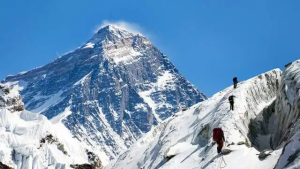
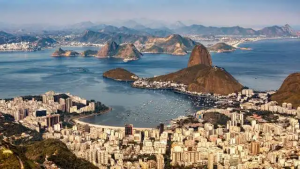
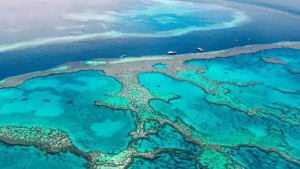
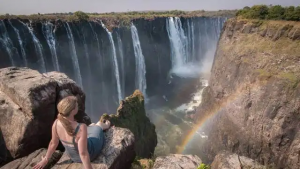
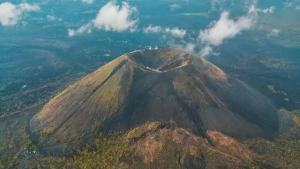
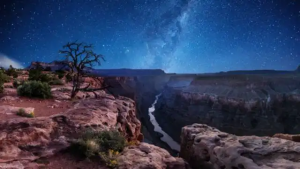
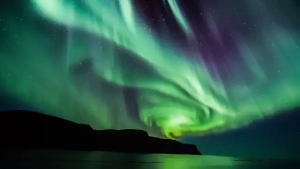








Share this article